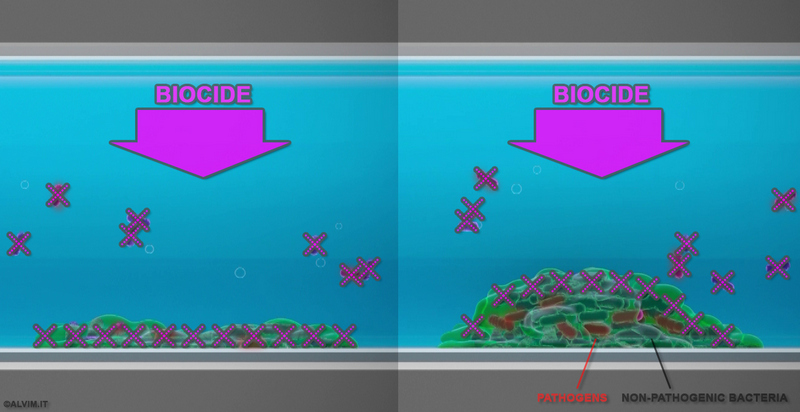
Legionellosis is the most significant waterborne disease in the United States, as indicated by the National Science Foundation (NSF). In the US only, it accounts for thousands of hospital admissions and many deaths. Even if cooling towers and air conditioning systems are commonly identified as the main source of Legionella pneumophila (the bacterium that causes this disease), the Centers for Disease Control and Prevention (CDC) revealed that Legionella is the most frequent outbreak associated with drinking water.
NSF and US EPA indicated biofilm as the root of the problem. Biofilm is the layer of bacteria that forms on any surface in contact with water (and other liquids). Even when it is not directly formed by pathogenic bacteria, biofilm represents the ideal environment for the survival and growth of dangerous microorganisms, such as Legionella pneumophila. Between 2015 and 2020, 86% of waterborne disease outbreaks associated with drinking water in US were linked with biofilm-associated Legionella. In the document "Developing a Water Management Program to Reduce Legionella Growth & Spread in Buildings", CDC confirms that biofilm protects Legionella from disinfectant, provides food and shelter to germs. To prevent such harmful contamination, it is strictly needed to keep biofilm growth under control, applying cleaning/sanitation treatments as soon as bacteria start to colonize surfaces in contact with the water.

The "European Technical Guidelines for the Prevention, Control and Investigation, of Infections Caused by Legionella species ", indicate that, in some investigations, water yielded few legionellae at the time of sampling, although biofilm from inside the pipes contained large quantities of Legionella. This probably reflected the type and positioning of the biocide treatment and zones within the piping where the biocidal effect did not penetrate adequately. Therefore, it is important to inspect water circulation pipes for the presence of biofilm.
The UK Health and Safety Executive (HSE), in the document "The control of legionella bacteria in hot and cold water systems", indicates that, in order to prevent Legionella outbreaks, dutyholders including employers or those in control of premises should:
- consider and evaluate monitoring, inspection and maintenance procedures;
- treat water to either control the growth of microorganisms, including Legionella, or limit their ability to grow;
- monitor any control measures applied.
Without a real-time, on line biofilm monitoring system, it is very hard to effectively prevent the risk linked to Legionella and other pathogens.
ALVIM Biofilm Monitoring System helps in keeping track of bacterial settlement and growth inside water lines, tanks, and other surfaces in contact with the water and other liquids allowing to check, at the same time, the efficacy of sanitation treatments. This System has been already used, with positive results, for Legionella prevention in cooling towers and hospitals. An application case in available here.
For more info, visit the ALVIM Biofilm Sensors page, or Contact us!





